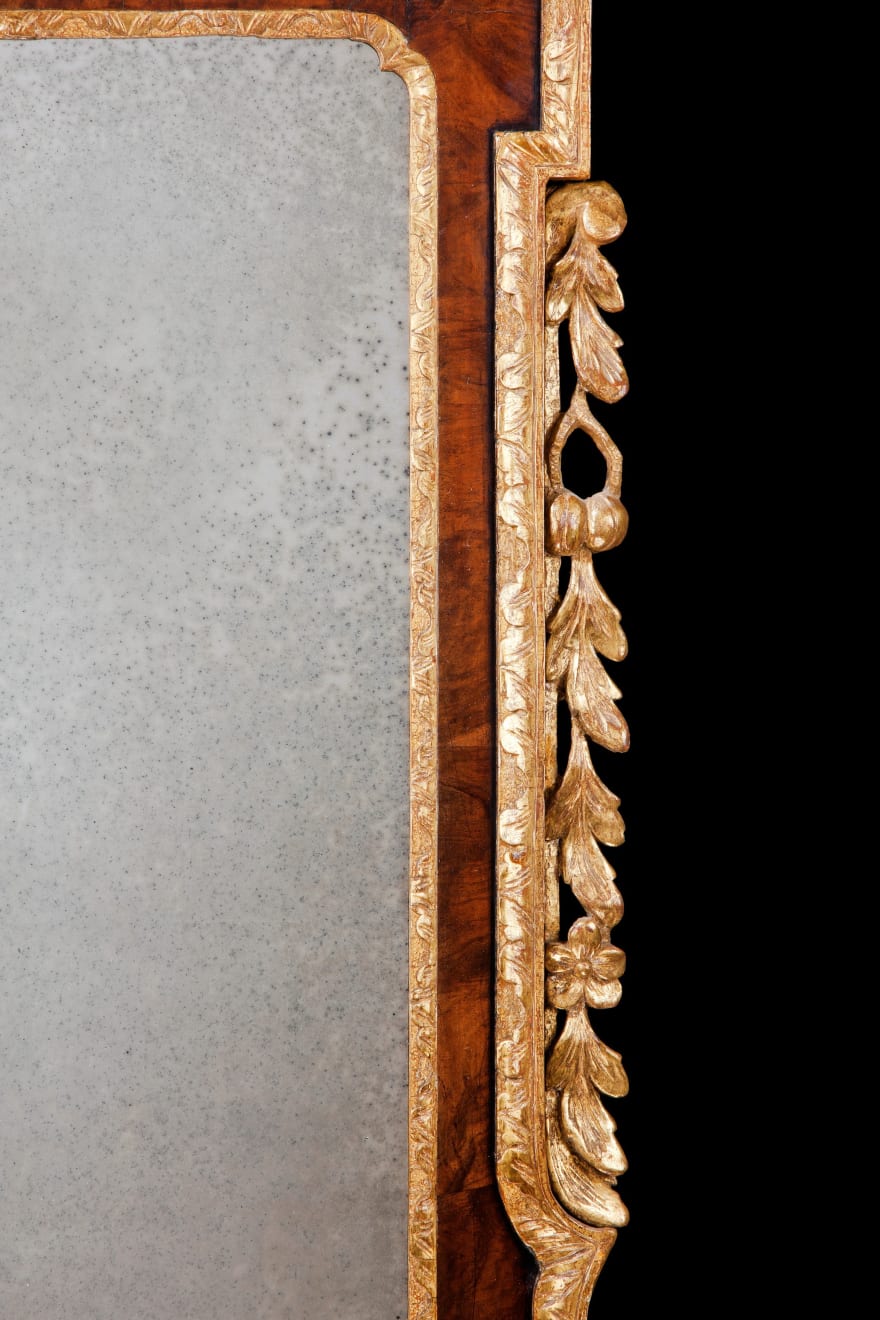George II Carved Giltwood and Walnut Veneered Mirror
130 x 66 x 9 cm
Further images
With carved scroll surmount centred by a shaped cartouche, the whole flanked by foliate carved decoration.
The combination of architectural influence with the scrolling and foliate decoration is typical of the beginnings of the Rococo movement which dominated eighteenth Century design. Adam Bowett explains that a frame of this shape is referred to as a ‘tabernacle’ frame. In the early 18th century, the term ‘tabernacle’ referred to a niche in a wall which housed a statue or a bust. Bowett comments that, in the case of the tabernacle mirror, ‘the figure of the deity was replaced by that of the viewer’. By 1730, the ‘tabernacle’ frame had achieved popularity and became an emblem of the national or ‘British’ style (Adam Bowett, Early Georgian Furniture: 1715-1740, Antique Collectors’ Club, 2009, p. 294-299).
An illustration of a similar mirror to the present example can be seen in Graham Child, World Mirrors 1650-1900, London, 1990, Fig. 92.






